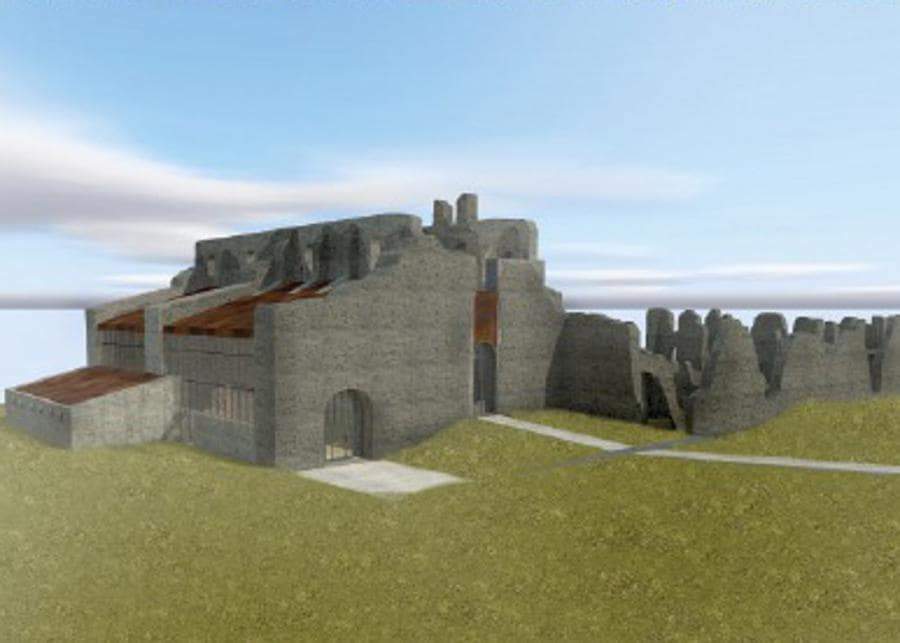The case of the restoration of the abbey of Santa Maria di Corazzo (in Carlopoli, Calabria) raised by an article by Anna De Fazio Siciliano last Sept. 30 in Finestre sull’Arte, has reached Parliament. The restoration, deemed too invasive, has in fact become the subject of a question by Senator Margherita Corrado of the 5 Star Movement, co-signed by her fellow Pentastellati Luisa Angrisani, Bianca Laura Granato, Sergio Puglia, Marco Croatti, Nicola Morra, Fabrizio Trentacoste and Daniela Donno.
The remains of the abbey, dating back to the 1160s, first Benedictine and then Cistercian, are located in a valley between the Amato and Corace rivers, and are what remains of the complex that was hit by several earthquakes and finally abandoned in 1808: it is nevertheless a place of great historical and cultural significance, not least because Corazzo Abbey welcomed for about a decade one of the most important medieval mystics, Joachim da Fiore, who became abbot in Santa Maria di Corazzo and probably wrote some of his texts. In 2017, the Abbey of Corazzo was included among the “natural and cultural areas of strategic importance” by the Region of Calabria, which therefore, Corrado emphasized, “recognized the importance of the abbey for the system of Calabrian cultural heritage” and allocated to the abbey a sum of 1.2 million euros, coming from the European Funds for Regional Development (ERDF) for the period 2014-2020.
With this sum it will be possible to proceed with the restoration of the abbey’s remains, and in fact a preliminary project for consolidation and restoration, which mainly targets the abbey church and the buttresses attached to the church between the 17th and 18th centuries, was presented on August 12. However, Corrado writes, “the renderings published reveal it to be, however, only nominally conservative and that because of its invasiveness it immediately caused a great stir, so much so that the prominence given to the presentation by the press, including the national press, was followed by the removal from the municipality’s web portal of what was published (on the same and on social Facebook) in view of the public event.” Always, points out the senator, “the many who have been fascinated by the monument, long studied, among others, by Professor Emilia Zinzi, and the context in which it fits, hope that the state will take initiatives to both increase knowledge and ensure its persistence and public enjoyment. The project anticipated to the media seems, however, to contemplate precisely the hypotheses feared by most, opposed both to subjecting the ruins to a real reconstruction and to allowing a mere crystallization of the state of affairs.”
And again, Corrado writes, "the creation on site of a small antiquarium where to bring together the furnishings and works of art dispersed in the churches of the diocese after the monks abandoned the abbey, or of a multipurpose hall, would involve the rebuilding of a sector of the building complex, envisaged with the use of crystal walls and a wooden roof, but among the most convinced detractors Professor Salvatore Settis, a Calabrian and member of the Superior Council of Cultural Heritage, has expressed his opposition by stating that ’any form of ’completion’ would not be on the side of protection, but of destruction of historical and patrimonial value’ (finestresullarte.info, dated Sept. 30, 2020)."
According to Corrado, the proposed project would sacrifice “not only the possibility of increasing knowledge about the history of the abbey and its church in particular” and would “affect a conspicuous part of the landscape value of the site, causing an irreversible alteration of the results of the natural ruderization, which has occurred over the last two centuries, of a monastic complex that has lived fully for at least six hundred years.” Therefore, it is, in the senator’s opinion, “a choice, neither obligatory nor taken for granted, to be taken perhaps collegially and certainly with extreme caution, favoring a design that does not have savings as its only merit.”
For this reason, the questioners ask the Minister of Cultural Heritage, Dario Franceschini, to know whether the minister “is aware of the facts exposed and whether he does not consider to urge the central offices of the ministry, not only to a careful verification of the quality of the project for the restoration of the Abbey of Santa Maria di Corazzo in order to the compatibility with the landscape and architectural values of the site, but also of the correctness of the internal administrative process of the Superintendence of Archaeology Fine Arts and Landscape, without neglecting to investigate the motivations of the manager or managers of the office, who have assented to the described path.”
Pictured is one of the renderings of the project.
 |
| Case of Corazzo Abbey restoration arrives in Parliament: 'it is invasive' |
Warning: the translation into English of the original Italian article was created using automatic tools. We undertake to review all articles, but we do not guarantee the total absence of inaccuracies in the translation due to the program. You can find the original by clicking on the ITA button. If you find any mistake,please contact us.